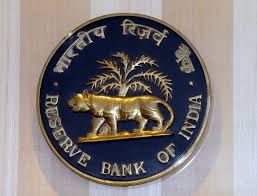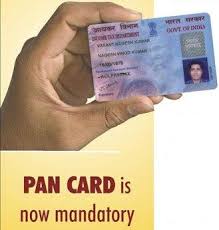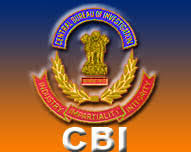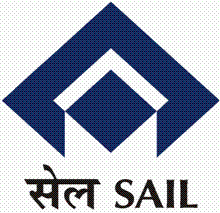
Source : F C : Landon Thomas Jr & Jack Ewing May 11 2010
Like the giant financial bailout announced by the United States in 2008, the sweeping rescue package announced by Europe has eased fears of a market collapse but left a big question: Will it work long term?
Stung by criticism that it was slow and weak, the European Union surpassed expectations in arranging a financial commitment of nearly $1 trillion for its ailing members and paved the way for the European Central Bank to begin purchases of European debt.
The initial reaction was euphoric: Markets rallied around the world in response to the concerted defence of the euro, a package that exceeded in size the United States bank bailout two years ago.
But on Tuesday, as details crystallised of the package’s main component — a promise by the EU member states to back 440 billion euros, or $560 billion, in new loans to bail out European economies — some analysts challenged the wisdom of solving a debt crisis by taking on more debt. The euro and global stocks fell.
“Lending more money to already overborrowed governments does not solve their problems,” Carl Weinberg, chief economist of High Frequency Economics in Valhalla, New York, said in a note. “Had we any Greek bonds in our portfolio, we would not feel rescued this morning.”
Such concerns may be part of the reason the euro fell back after shooting as high as $1.3094 on Monday. By the end of business in Asia on Tuesday, it traded at $1.2681.
The Euro Stoxx 50 index of euro-zone blue chips fell 1.6 per cent by mid-day in Europe, after soaring more than 10 per cent on Monday. The Nikkei 225 index in Tokyo closed down 1.1 per cent.
Another big issue is whether bailing out economies creates moral hazard. Other countries may continue to skirt the kinds of actions that would lower their budget deficits and debt loads — steps painful to the public and dangerous to politicians — because they, too, can expect to be rescued.
It is clear that Europe’s fund will require the sustained support of the 27 nations that form the European Union — not to mention its richest member, Germany, which has until now deeply opposed a bailout.
Indeed, for all the excitement about the scale of the effort, it is important to remember that the core fund does not now exist. The fund, known as a special purpose vehicle, would raise money by issuing debt and making loans to support ailing economies. The European countries would guarantee that fund.
So the package is merely a commitment for the vehicle to borrow money if a large economy like Spain, which represents 12 per cent of the output in the euro zone, asks for assistance. The International Monetary Fund is pledging 250 billion euros to support the effort; 60 billion euros under an existing lending programme pushes the total to near $1 trillion.
The fund is therefore more a theoretical construct than the Troubled Asset Relief Programme that was created in the United States, and that is where things get tricky.
By definition, if Spain came to a point where it could no longer finance itself, interest rates would be on the rise. The several hundred billion euros for the fund would not only come at a high cost, but would bring additional pain to already indebted countries like Portugal, France, Italy and the United Kingdom, which back the special purpose entity, thus compounding the region’s debt woes.
For Dominique Strauss Kahn, the IMF’s ambitious managing director, the programme is a hard-earned victory that allows the Fund to assume a central role in pushing for economic change in Europe.
On Monday, Greece’s cabinet approved major changes in its pension system, including an increase in the early retirement age to 60 and the broader retirement age to 65, as part of a three-year package of changes imposed by the Fund and the European Union.
Yet some Fund staff members have pointed out that, if anything, the rescue package and the IMF commitment to support it might give countries like Spain an excuse to retreat a bit from the tough measures that have distinguished Ireland’s and Greece’s austerity efforts.
“It shows that Europe can come together,” said a banker with close ties to the Fund who was not authorised to speak on the record. Though it takes the pressure off Spain, the banker said, “it does not address structural pressure in Europe.”
In effect, Germany and other wealthier European countries are assuming responsibility for the creditworthiness of Greece, Portugal and the other debt delinquents.
But the European central government is weak and must invent new structures to administer the promised aid.
“The debt crisis will change the nature of European monetary union,” Jörg Krämer, chief economist at Commerzbank, wrote in a note Monday. “The euro zone has moved away from a monetary union and towards a transfer union.”
Krämer warned that the shift could “undermine political support for the euro zone in the long run. After all, it is unlikely that the countries receiving support will let others permanently dictate their economic policies. Moreover, voters in the countries giving support will not be willing to permanently give financial support to other countries.”
On Monday, Jean-Claude Trichet, president of the European Central Bank, warned European governments, all of which will probably miss the budget deficit goals they agreed to when they created the euro, that they must continue to cut government spending.
At a time when economies, from Romania and Hungary to Britain and Spain, are struggling to meet their deficit goals, Trichet’s warning took on extra resonance.
Romania and Hungary are operating under IMF programmes, while Britain and Spain are trying desperately to persuade markets that they will not experience the financing problems that have forced so many countries in Europe to seek assistance.
“For us, what is absolutely decisive is the commitment of governments of the euro area to take all measures needed to meet their fiscal targets this year and in the years ahead,” Trichet said at a news conference in Basel, Switzerland.
But after 10 years of mostly missing fiscal guidelines during a worldwide economic boom, it remains uncertain if more finger-wagging by Trichet and a new fund backed by the IMF will be enough to return European nations to fiscal health as their economies stagnate and social pressures build.
(James Kanter, David Jolly and Sewell Chan contributed to the report.)















